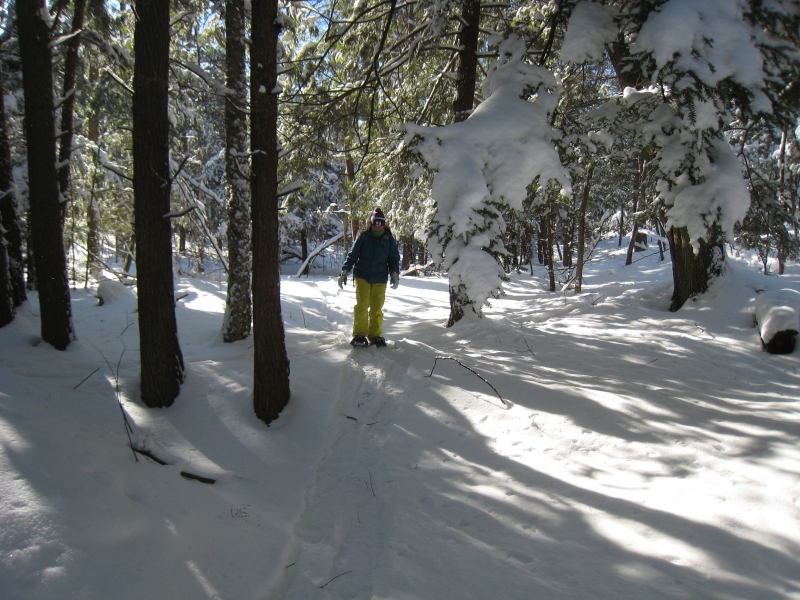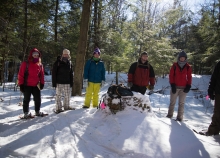
First Day of Class
This winter Nature Up North is featuring a Winter Ecology Series, in which St. Lawrence University students in Dr. Karl McKnight's Winter Ecology course share their observations from a weekly field trip to Glenmeal State Forest in Pierrepont. We hope you enjoy their accounts from days spent in the woods examining the fascinating ways plants and animals endure the North Country winter.
By Addie Peterson
The most obvious sign of winter is everywhere: the ever-present mix of soft and crunchy white snow. In the summer months, I dream of the glittering flakes, and the way they catch on my eyelashes and melt slowly, seeping into the corners of my eyes. I envision the way the world looks when I wake up after a long night of snow, longing for the winter wonderland that waits. What usually slips the mind and fails to be remembered is the bitter, bitter cold. The days that drop so far below freezing you would rather starve then walk to get food. Today was one of those days, one of the coldest days I have been outside and walking around. Surprisingly enough, I thoroughly enjoyed myself.

As a large group of fourteen, our snowshoe tracks left a clear trail that couldn’t be missed. The continuous rustle of snow pants and down jackets produced a din that would scare away any creature within hearing distance, but we were able to make note of their tracks. Every now and again we would stop to examine a snow trail and try and decipher the story. By determining whom the tracks belong to and how the surrounding tracks play a role, we start to get a sense of the winter scene that took place. I learned the little details are what can give away the characters, such as the heavy tail drag of the mouse, or the dill-smelling pee of a deer. I also was excited to identify deer beds and peek at a slumbering porcupine. I have learned a lot of trees by sight, but I was introduced to the aspen as we walked around, and many more to follow as we used our books to help us identify trees by their buds.

We would often walk for minutes at a time, and I found myself drifting into my thoughts and let nature have the calming affect it always has on me. There’s something about being outside that allows me to think through my problems, without feeling claustrophobic within my own head. As the morning passed by, my thoughts turned from personal to practical – my feet had definitely lost their feeling. I tried to stay engaged as we continued to discover new and interesting surprises in the forest, but most of the time I was occupied with finding new ways to move my toes to regain feeling. It didn’t help that my snowshoes kept falling off, causing me to stop and fix them, freezing my hands in the process. The frustration didn’t last long, and as the painful feeling came slowly back into my extremities I knew there was nowhere else I would’ve wanted to spend my afternoon.
Date: 23 January 2014 Snow Depth: 19.5cm Snow Density: 0.13 g/cm3

